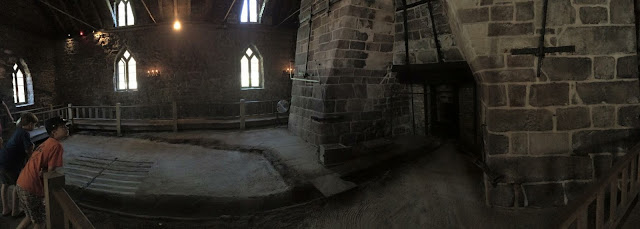Why were cannons important during the Revolutionary War? What can you do with a cannon that you cannot do with a rifle or musket?
First, cannons can shoot a very long way. Even during the Revolutionary War a cannon could shoot almost a mile. Also, you can stuff a cannon with a whole bunch of round bullets, called grapeshot, and shoot them all at once. Sort of like a long-range shotgun.
The British army had a lot of cannons, the colonial army didn't have very many. That is why the capture of Fort Ticonderoga early in the Revolution so important. It had a lot of cannons.
Built in 1742, the Cornwall Iron Furnace was a very important supplier of both cannons and cannonballs, as well as other iron-workings, during the Revolutionary War. Thanks to the war, it's owners became Pennsylvania's first millionaires.

From the cannons to the the cannonball storage areas, you can walk in the footsteps of those who armed Patriot soldiers. A big part of the tour is learning about the process of making iron. In our mini-unit below, you can watch a short video of this process.
This fact-filled tour is about forty-five minutes long, and much more interesting that it sounds to the average mom!! At the lowest point, we see where the men would have been in a blazing fire for 12-14 hours each day, working with molten iron. The life span for a laborer was around forty.
Iron Furnace Mini-Unit
- How to Fire a Cannon
- Lego : Toy Cannons
- Weapons of the Revolutionary War unit
- Revolutionary War Weapons informational unit
- Images of America : Cornwall








No comments:
Post a Comment
Note: Only a member of this blog may post a comment.